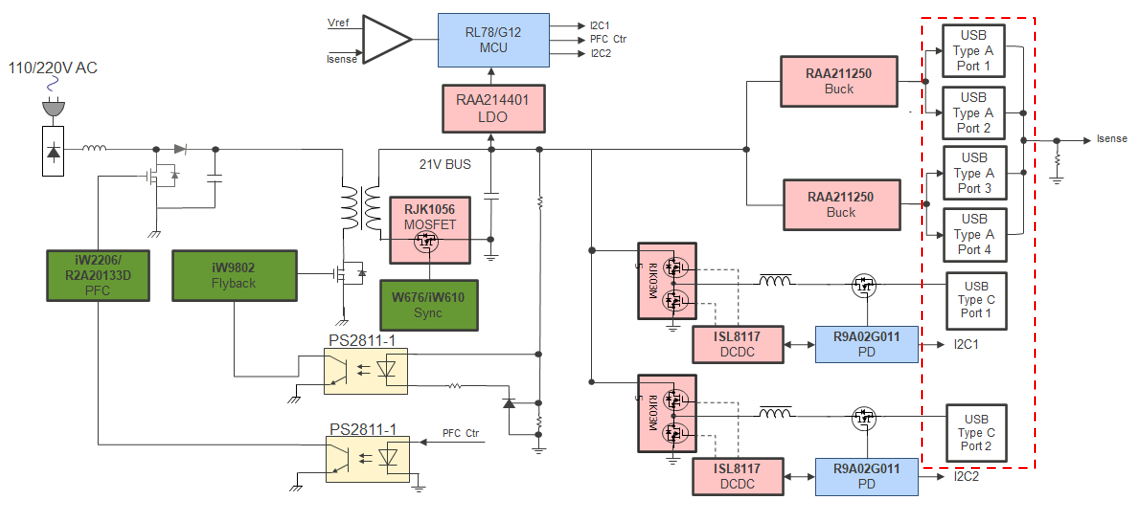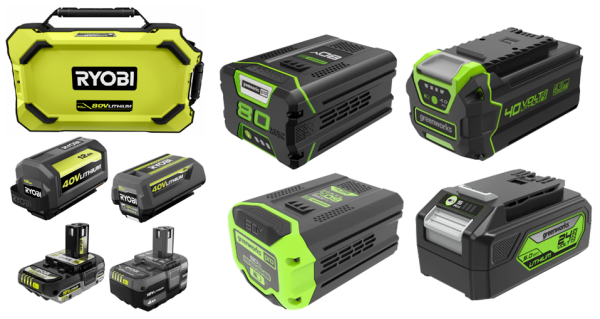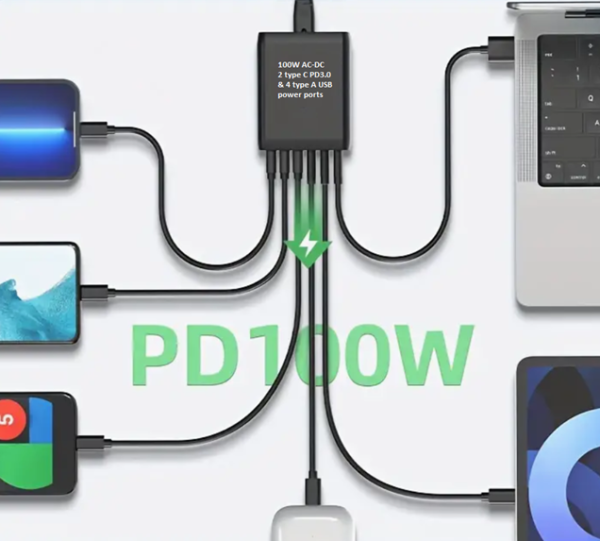The improvement in battery technology over the past 60 years has been staggering. Batteries were first used mostly for flashlights, toys, and transistor radios. It then progressed to calculators and watches, and eventually into mobile phones and laptop computers. The advancements in the past 10 years have enabled high-powered battery devices that were probably unimaginable 50 years ago. We may be headed to a world where combustion engines will be for power tools, or cars will be completely overtaken by battery power or other forms of renewable energy. This will continue to create more needs for DCDC power management products that were nonexistent not too long ago. Because of this, Renesas’ latest family of industrial DCDC regulators is especially well suited to address the power needs with products ranging from 30V to 75V delivering output currents from 2A to 5A; RAA211250/450/630/820/835.
As noted, many products are powering off DC power sources that could tap from solar panels, USB adapters (e.g., Type-C PD3.1), PoE (48V), SuperCaps, Nickel or Lithium base batteries, and so on. All these different DC sources have their own different DC minimum to maximum operating ranges that lead to a need for wide Vin operating regulators offering high efficiency and tight voltage regulation over the full temperature and input operating range.
One example is to look at how battery technologies have evolved in size, weight, power capacities, charge + discharge times, as well as cost, where more complex products are being seen shifting from cord to cordless or gasoline to batteries or Grid (AC) to Solar (DC). These changes in direct or indirect ways do play a significant role in reducing greenhouse gas emission (e.g., e-buggy, e-forklift, e-bike, solar on-grid, solar power bank) and also enhances people’s lives (e.g., autonomous robots, drones to serve or deliver goods, portable power tools).
Figure 1. Various types of batteries suitable for the RAA211x family of bucks
Solar panels table based on different output voltage ranges from a number of solar cells in series (VOC = voltage at open circuit, VMP = voltage at maximum power).
Table 1. Solar panels
| Nominal Voltage | VOC – typical | VMP – typical | # of cells in series |
|---|---|---|---|
| 12 | 21 | 17 | 36 |
| 18 | 30 | 24 | 48 |
| 18 | 33 | 26 | 54 |
| 20 | 36 | 29 | 60 |
| 24 | 42 | 35 | 72 |
Another example is to look at the increasing trend of USB type-C power devices where USB type-C has become de facto DC connectors standard to power many different USB type-C products from as low as 0.5W to as high as 240W. These type-C power sources depending on target applications are capable of outputting different DC-out 5V/9V/12V/15V/20V as well as future PD3.1 (EPR) with 28V/36V/48V add-on.
Figure 2. An example of USB type-C connectors
Renesas’ RAA211x family of bucks was developed to address these needs while reducing the overall BOM with an easy-to-use, scalable solution (all variants come in similar QFN or HTSSOP packages) to address up to 5A loading from 4.5V to 75V input source applications suited to power off from different multi-cell battery packs or USB PD3.1 sources without compromising performance (e.g. transient performance, efficiency at light to heavy load, 1% voltage reference from -40 to +125C, wide adjustable Vout range from 0.8V to 90% of Vin, low Iq, programmable switching frequency, protection features).
Figure 3 shows an autonomous robotic system powered by a 48V battery where RAA211820 was selected due to its wide Vin operating range to power 5V and below circuits (e.g., Wi-Fi/BLE LE modules & different MCU boards). You can see the green switch added as a battery switchover between the system in full operation vs. when in power save mode to ensure the overall best efficiency performance to maximize battery operating time.
The block diagram below in Figure 4 outlines the 100W USB PD3.0 AC-DC adapter where the dotted red box has RAA211250 (30V @ 5A) being used to power the USB Type A board taking the 21V input source coming from the secondary output of the AC-DC blocks. The newer PD3.1 that supports EPR additional outputs like 28V, 36V, and 48V can still use any of the family RAA211450/630/820/835 bucks to replace RAA211250 with minimum changes in layout design to power downstream peripherals. Besides the AC-DC power adapter evolving, one can also see an increase in wall-mount USB sockets. These provide DC voltage to power or charge different types of products (not just limited to smartphones but also include notebooks, printers, smart appliances, and power tools).

Figure 3. Example of a 100W USB PD 3.0 AC-DC adapter

Figure 4. Example of a 100W USB PD3.0 AC-DC adapter block diagram
Table 2. RAA211xxx Family of Bucks Lineup
| Operating Voltage Range | Abs Max Supply Voltage | Rdson (High/Low) QFN | Rdson (High/Low) HTSSOP | Max Continuous Load Current | Part Number |
|---|---|---|---|---|---|
| 4.5 ~ 30V | 30V | 70mΩ/25mΩ | 115mΩ/40mΩ | 5A | RAA211250 |
| 4.5 ~ 42V | 45V | 70mΩ/25mΩ | 115mΩ/40mΩ | 5A | RAA211450 |
| 4.5 ~ 60V | 65V | 110mΩ/40mΩ | 155mΩ/55mΩ | 3A | RAA211630 |
| 4.5 ~ 75V | 76V | 155mΩ/80mΩ | 200mΩ/95mΩ | 2A | RAA211820 |
| 4.5 ~ 75V | 76V | 155mΩ/NA | 200mΩ/NA | 3A | RAA211835 |
Visit renesas.com/buck-integrated-fets to learn more about how these high-performance, highly scalable buck converters can help you with your next cutting-edge design.


